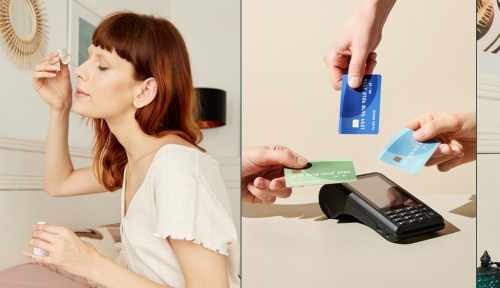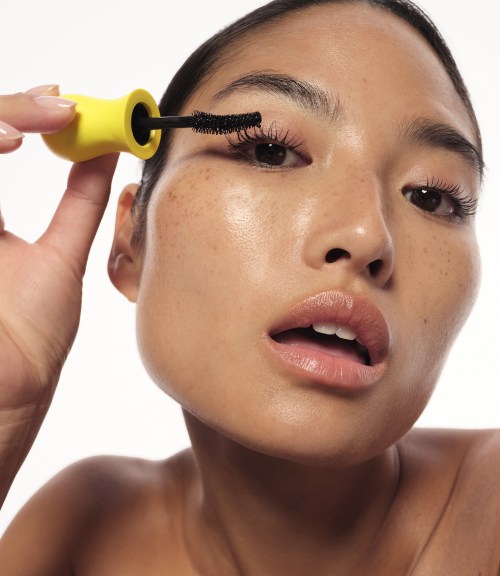Picture this: You’re shopping for skin care online, and just before you check out, a pop-up asks if you want to complete your order with some perfectly curated extras. Perhaps you want to supplement your cleanser with a serum, or pair your new lipstick with a liner? It takes only a few seconds for you to convince yourself that you deserve these added bonuses—after all, you work hard!—and before you know it, they’re on their way to your doorstep.
Though this “treat yourself” mindset may seem insignificant, in some cases, it can be indicative of a deeper psychological phenomenon. “Treat culture is a form of self-care dialed up 100 percent, without regard to anything else, including our budgets,” says Jenny C. Yip, PsyD. “We live in a material world, and we are constantly influenced by media that tells us we need more to be happy. In the last few years, we have reinforced the idea of self care in our society, and a lot of people are taking the idea to an unrealistic degree. Whether it’s to feel good about themselves or to avoid uncomfortable emotions, we’ve fallen under this lie that we will be happier if we have this or that.”
While treating yourself isn’t inherently a bad thing, it becomes problematic when people can’t resist making a purchase because they’re chasing the instant gratification “high” associated with shopping—even when they can’t afford it.
“When we are in the process of treat-culture shopping, dopamine is released, ” says Justin Puder, PhD, a Florida-based licensed psychologist. “This happens because as we look at different items or compare things we may buy, our brain is anticipating a reward, increasing our motivation to shop and creating this shopper’s high… Endorphins are also released during the shopping process, which explains why many people treat themselves after a bad day and report feeling a decrease in stress and improved mood afterward.”
The problem is that the enjoyment you get from pressing “add to cart” on a buzzy new beauty product always has a shelf life, and once it wears off, you’re left right where you started psychologically… but further into debt.
The intersection of treat culture and beauty can be an insidious one
Treat-yourself behavior trickles into every part of our lives—from ordering an extra appetizer at dinner to buying a little pick-me-up after a bad week (or a good week, or simply because you made it to Friday)—but it’s particularly prevalent in beauty. According to a recent study from Credit Karma 24 percent of Americans prioritize spending money on their beauty/self-care routine over necessities like housing, groceries, or bills. What’s more, 15 percent of Americans have gone into debt just to keep up with their beauty or self-care routines.
The reason? Beauty, in itself, is a form of capital: Research has shown that conventionally attractive people earn 15 percent more thanks to a phenomenon known as “the beauty pay gap.” In a world wherein the way you look can impact your opportunities and earning potential, it’s easy to see how people can convince themselves it’s “worth it” to spend on the latest *it* serum or miracle-working treatment.
“It deludes us into thinking that beauty can buy happiness, fulfillment, social standing and tells us that beauty is empowerment—meanwhile, to obtain beauty, we have to sacrifice our actual sources of capital—money, time, energy, headspace,” says Jessica DeFino, beauty culture critic and author of The Unpublishable, a newsletter that’s critical of the beauty industry. “People are so desperate to treat themselves with beauty products and procedures because beauty culture, just like diet culture, deliberately encourages desperation.”
People need to feel good about themselves, even if it’s for a split second, and the beauty industry knows it can use this desperation to its advantage. “When companies connect with customers’ emotions or mental state, the payoff can be huge,” says Dawn Fable, founder of skin-care brand Press Pause and global VP of Pause Lifestyle Brands under Tenacious Labs. “Given the expansive opportunity to create value, more and more companies are pursuing emotional connections as the science behind their brand positioning. We as a society are facing unprecedented levels of stress, and I believe consumers expect brands to engage with their mental and emotional needs in a genuine way. Often, this cycle leads to brands justifying a premium price, and lately, they’re getting the buy-in from consumers.”
Consumers, meanwhile, are stuck in another self-perpetuating cycle.” “When we inject our lips with filler, we help normalize plump lips as the baseline standard of beauty,” Fable continues. “The more a beauty standard is normalized, the harder it is to opt out of it without facing social or economic consequences. So when we manipulate our faces and bodies to adhere to a particular beauty standard, we increase the pressure our future selves will feel to maintain that standard, and we increase the pressure the collective feels to embody that standard.”
Many beauty ideals are physically impossible—from hairless bodies to poreless and ageless skin—which can cause a profound sense of insecurity about normal human features, and convinces people that they need to buy more more more as a way to cope. “The only way to ease this insecurity is [for people] to ‘treat’ themselves with a new product or procedure,” says DeFino. “Getting Botox may make you feel better about the basic biological function of aging, but only for three to four months at a time.”
People are pouring their energy (and money) into beauty products as a way to achieve a certain standard of perfection, but because they’re ignoring the psychological causes behind their behavior, their purchases leave them empty. They then repeat the process in the hopes that the next foundation/serum/shampoo will be the one to bring them peace, but according to psychologists, that likely won’t happen.
How to stop the spending cycle
While the answer isn’t as simple as going cold turkey on treating yourself, cutting yourself off can be a place to start. And if you continue to struggle, it could be because overindulging in treating yourself is being driven by an underlying issue. If your treat of choice is having a vanity stocked with the latest slew of makeup must-haves, ask yourself: Is it truly because it makes you happy, or is it because you don’t find yourself worthy? Lee Phillips, LCSW, encourages people to get support from others and seek help from a therapist to work through underlying issues. Once identified, the therapist can help you find ways to manage your dependency on treating yourself to feel good.
So, before you decide to hit buy on your next treat, remember that self care doesn’t necessarily entail shopping or spending money. “Many forms of self care like exercise or meditation don’t require money to be spent. You’re not doing anything inherently helpful for your mental health if you’re over-shopping and consequently experiencing debt,” says Dr. Yip.
If the urge to spend surfaces again, DeFino recommends asking yourself, “How long will the ‘good’ feeling of treating yourself last? And how long will you have to work to pay off the cost of that feeling?”
Knowing the average credit card debt individual Americans carry versus the average length of a treat-yourself dopamine hit, the financial impact lasts longer than the emotional payoff.
Sign Up for Our Daily Newsletter
Get all the latest in wellness, trends, food, fitness, beauty, and more delivered right to your inbox.
Got it, you've been added to our email list.










